Eastern Maine’s Acadia National Park is home to a rugged stretch of Atlantic coastline. It boasts jagged granite cliffs and quiet winding trails that lead into a forested world seemingly forever hidden by a thick northeastern fog. The soothing sound of crashing waves and distant lobster buoys enhances the park’s deep nautical essence and the moody allure of the nearby sea.
Acadia Guide
Alert
Acadia National Park now requires a PERMIT to drive on the Cadillac Mountain Drive.
Acadia National Park
Home to a both a rich nautical history and a storybook landscape, this unique national park offers a mixture of adventure and culture. The confluence of an eastern hardwood and a northern boreal forest creates smooth blankets of green that lie littered with wide patches solid grey granite cliffs.
Down by the sea, the craggy coastline of the Atlantic Ocean offers a picturesque backdrop to the small seaside village of Bar Harbor, which bustles with activity as tourists roam its streets and shops while local lobstermen bring the day’s haul ashore after a long spell at sea.
Upon arrival at Acadia, an astute visitor will immediately note that this is not the typical national park. While there is a stunning array of natural beauty, an adventurous attitude in passerbys, and a collection of trails that lead to enchanting destinations, there is also a strange coordination of park and private land.
Although a first impression of this relationship may cause concern, a short hike into the hills will quickly alleviate any anxiety of a surrounding or encroaching community. In fact, in a modern twist of park irony, it was actually Acadia National Park that encroached into the community.
Acadia offers relatively easy access to its stunning scenery, despite the residential aspect of Mount Desert Island. While there are trails and routes that will challenge the heartiest of hikers, there are likewise a multitude of options to access similar scenery via auto and short walkways that will be a joy for anyone. This is a small park, but it’s big on scenery, and nearly anyone can enjoy it.
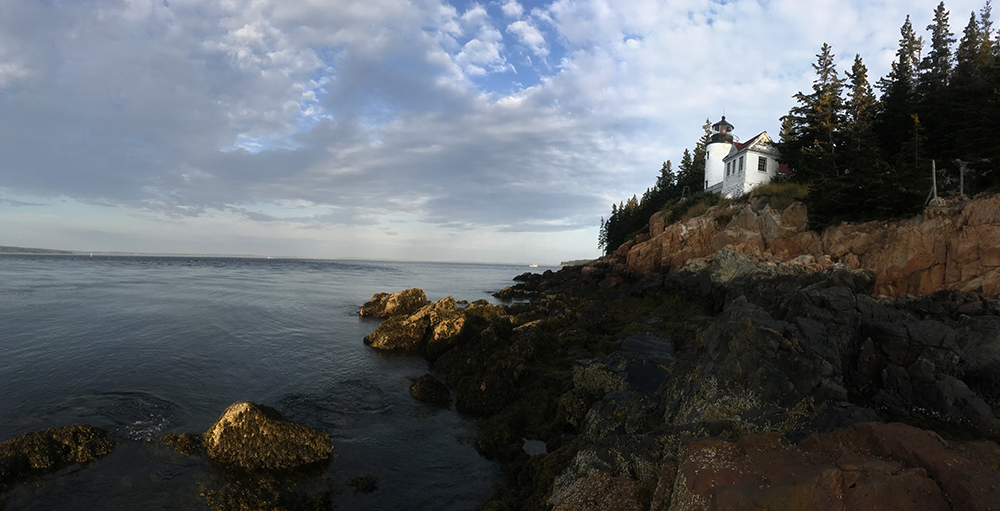
“The scenery of Mount Desert is so beautiful and remarkable that no pains should be spared to save it from injury – to the end that many generations may receive all possible benefit and enjoyment from the sight of it”
Charles Eliot 1883
Where is Acadia?
The park is located on the second largest island on the eastern seaboard of the United States, about 50 miles southeast of Bangor, Maine. Mount Desert Island holds most of the park’s popular destinations and contrary to the mundane nature of its name, nearly all of its services.
The island is home to Bar Harbor, a town of just over 5,000 residents, which is the entrance portal to the park and serves as the central hub for most services that visitors will seek during their visit. This small town has an ample collection of lodging, dining and tour options, but will be extremely during the busy summer months.
While Mount Desert Island holds the majority of Acadia’s well-known attractions, a few highlights are also found on the Schoodic Peninsula, and the Isle au Haut. Visiting these locations will require some planning, especially Isle au Haut, for which transportation will need to be arranged. See the Visiting page for more information on these areas.
Exploring Acadia
Acadia is a bit spread out, as are most parks. There are areas that hold a collection of attractions, and then there are a few points of interest which lie a ways from anywhere. Most visitors will likely have an automobile, so this will be the main method of transport. For those who don’t, there is a park shuttle. See the Visiting page for more info on that option.
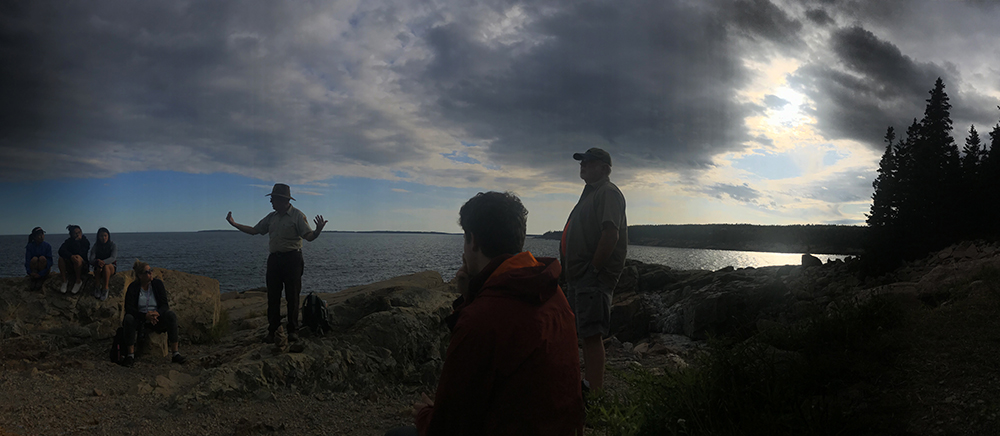
Visitors can explore the park’s mountains, lakes, forests and coastline from the 27-mile Park Loop Road, or hike any of the 125 miles of historic trails within the park. In addition to these activities, guests can ride bicycles, enjoy leisurely seaside walks, or take horse-drawn carriage tours on the 45 miles of unique “carriage roads” that are within the park boundary.
See the Activities page for more info on what to do in Acadia.
Acadia’s Coastal Scenery
The first thing visitors will notice when they arrive in Acadia is usually the Atlantic Ocean. This is a coastal park, and much of the park’s stunning scenery will include views of the sea.
The 27-mile Park Loop Road is a great place to start your tour and is the primary artery to many of the park’s famous destinations that lie along the park’s eastern shore.
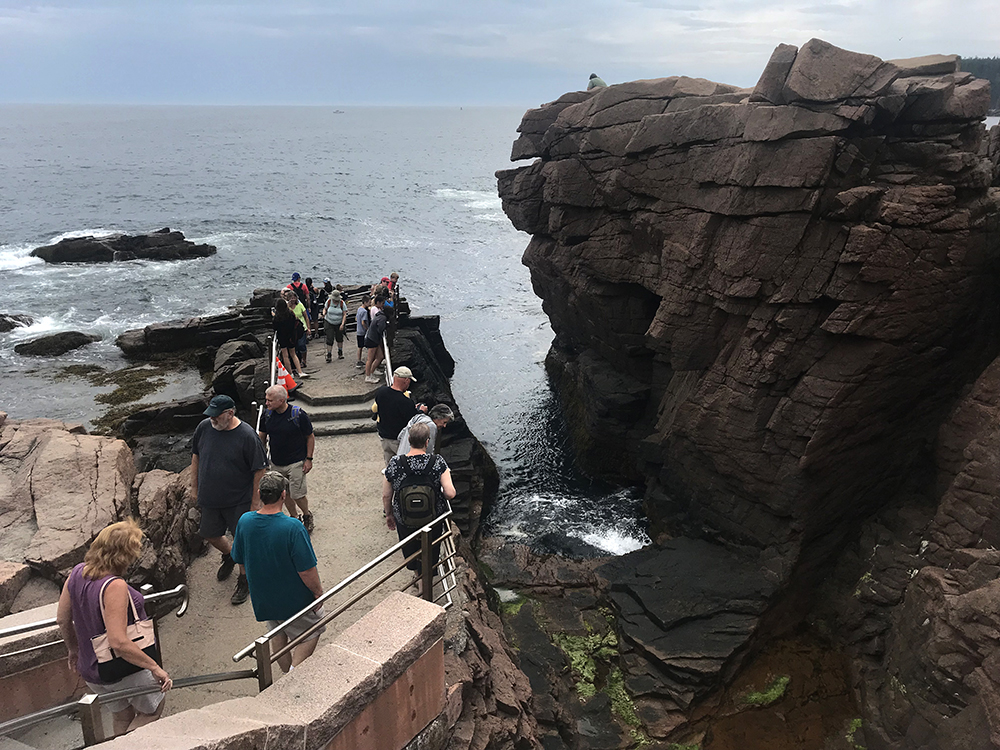
From Sand Beach to Thunder Hole, to Otter Cliffs, the visual senses will be humming as guests devour the coastal landscape from their metal coffin, from scenic overlooks, or from the fabulous trails that lead up into the hills that rise to the west above the sea.
Cadillac Mountain
This is definitely one of the highlights of the park. Cadillac is the park’s tallest mountain and is the highest peak on the entire Atlantic Coast, from the Arctic to Rio de Janeiro. Due to its height and eastern longitude, this is the first place in the continental U.S. to witness the sunrise.
Most of Acadia’s 3 million visitors make their way to the summit of this mountain, which rewards a strenuous hike from far below on one of three different trails with one of the best views in Maine.
Would-be visitors can take comfort in the fact that the majority of the summit’s visitors arrive by automobile. A select few of these visitors arrive in a great big Cadillac, with a diamond in the back… a sunroof top, diggin’ the scene with a gangsta lean… True Park Junkies…
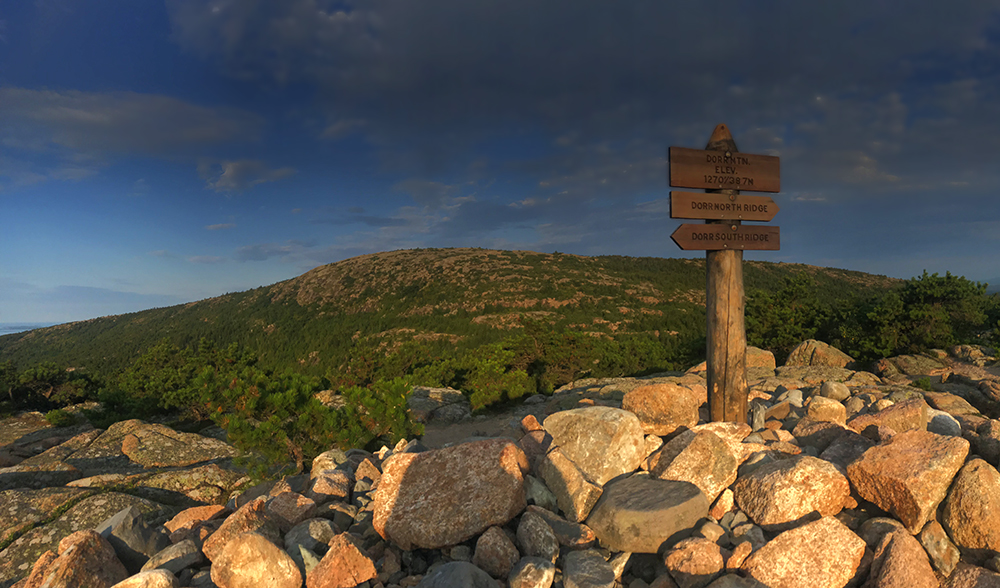
The mountain stands 1,530 feet above the sea below and provides a view of most of the park. Summer mornings showcase an unending string of headlights ascending the mountain’s west slope and the parking lot at the summit can be full upon arrival for those who got a late start.
See the Activities page for information on hiking up Cadillac Mountain.
Acadia – Donated to the People
In the late nineteenth century, Mount Desert Island was a relatively exclusive summer retreat for America’s aristocratic class, whose summer “cottages” stood etched in opulence atop the island’s finest viewpoints.
Wealthy east coast families spent their summers idling away the sunny days hiking in the island’s hills and strolling along the shore with prominent friends and titans of business.
As the island became ever-smaller due to its increasing popularity, a small number of individuals became concerned that Mount Desert Island’s rapid development may soon tarnish the very natural experiences that made the island so special.
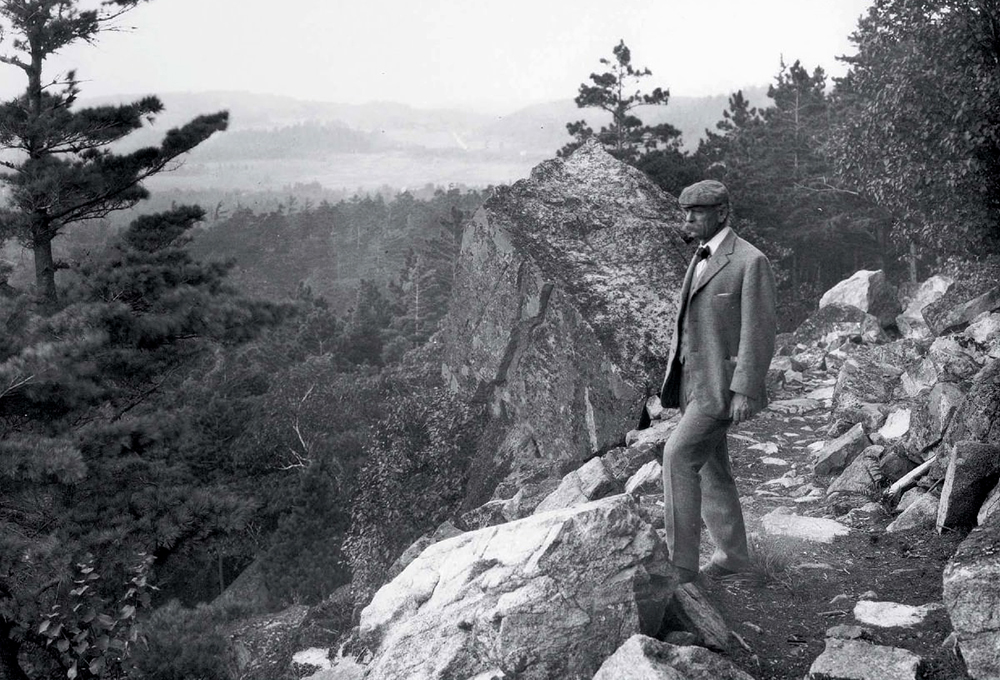
Slowly, the idea of preserving the more scenic areas of the island through the creation of a national park began to surface. A young idealist named Charles Elliot first proposed the idea through his writings in the early 1880s, although he would pass away long before his dreams would become reality.
Although it would take nearly three decades, the efforts of few local residents led by George Dorr, eventually amassed a handsome collection of properties donated by wealthy landowners.
In 1916, the first national park created from private lands, and the first national park west of the Mississippi River, was dedicated as Sieur de Monts National Monument. In 1919, President Woodrow Wilson added his signature to legislation that established Lafayette National Park. In 1929 the park received an additional grant of land and the park was renamed Acadia.
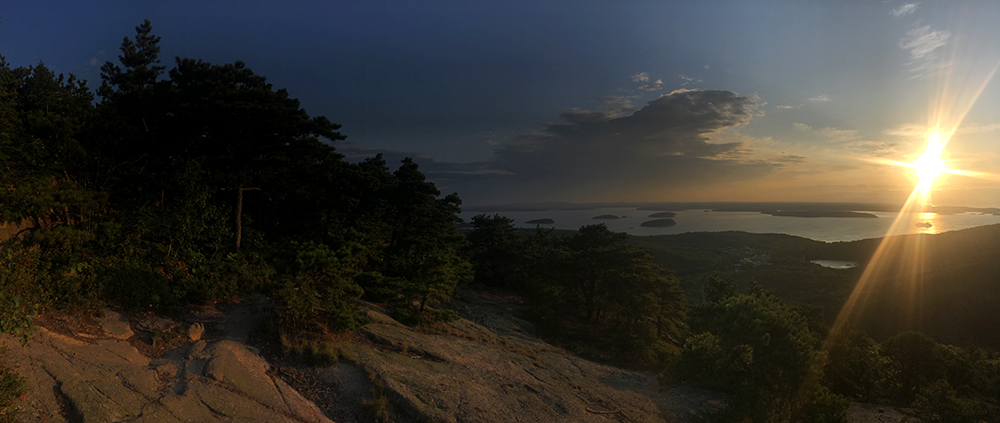
Rockefeller’s Carriage Roads
One of the most unique features in Acadia is the system of carriage roads that wind through the park’s most popular areas. Some 45 miles of intricately-designed broken-stone roads provide access to some of the best scenery the park has to offer. Guests can hike, bike or ride horses on these roads during most of the year. During the winter, snowshoeing or cross country skiing can give the motivated outdoorsman a workout on these same roads.
For more info about Acadia’s carriage roads see the Park History page here at Park Junkie, or to learn about horse-drawn carriage rides, see Activities the page.
Wildlife and Plants in Acadia
Although the park is relatively small, the diverse landscape supports a surprisingly abundant array of plant and wildlife, along with 40 miles of seashore and the endless wonders that this entails.
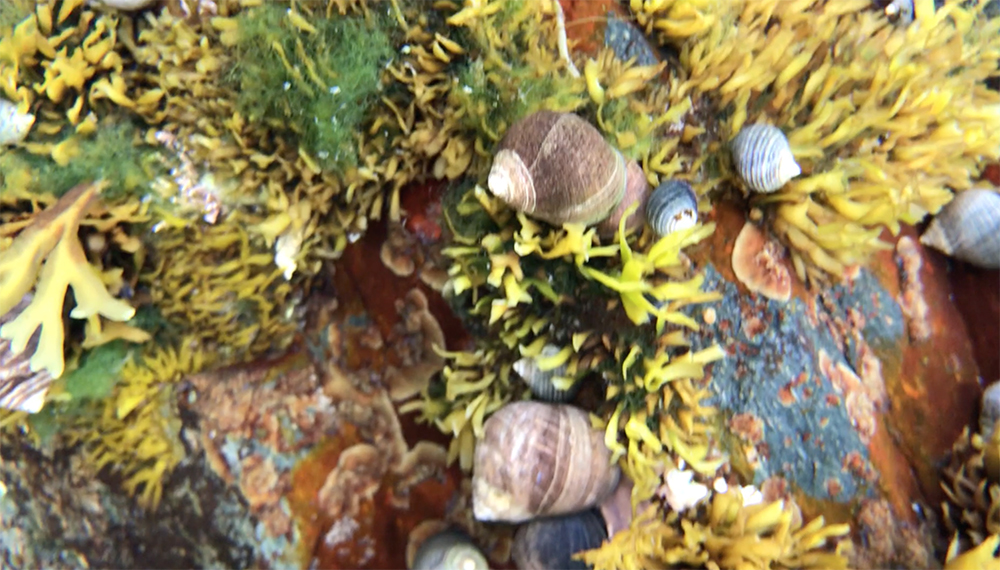
More than 400 indigenous plant species can be found throughout the park, with a showcase of these available at the Wild Gardens of Acadia, which is found at the Sieur de Monts Nature Center near the entrance of the same name.
If wildlife is your thing, keep your eyes peeled for a few of the 37 species of mammals that are found in the park. You never know, your eyes may treat you to a viewing of a rare Acadia black bear or a bobcat. There are also foxes, minks, muskrats, beavers, raccoons, and white tailed deer running through the forests.
Offshore, you’ll want to scan the seas for whales and dolphins, which can be seen surfacing for air. Closer to shore, otters and seals spend their time feeding and playing in the rocks that line the coast.
When to Visit Acadia
Most people visit the park in the summer months and all services can be accessed during this time. However, the park’s trails offer a splendid retreat from the daily grind of the northeastern U.S. and everybody knows it. You’ll find plenty of other visitors, but a quick hike into the hills can rid you of most of the crowds. More remote areas may offer complete solitude for hours.
The park is open year-round, however many facilities, such as the Hull’s Cove Visitor Center and most of the park loop road, including the road to Cadillac Mountain, are closed in the winter. During this time of year, visitors can access a park ranger and information at the Bar Harbor Chamber of Commerce at 2 Cottage Street at the corner of Cottage and Main Streets from 8am till 4pm daily.
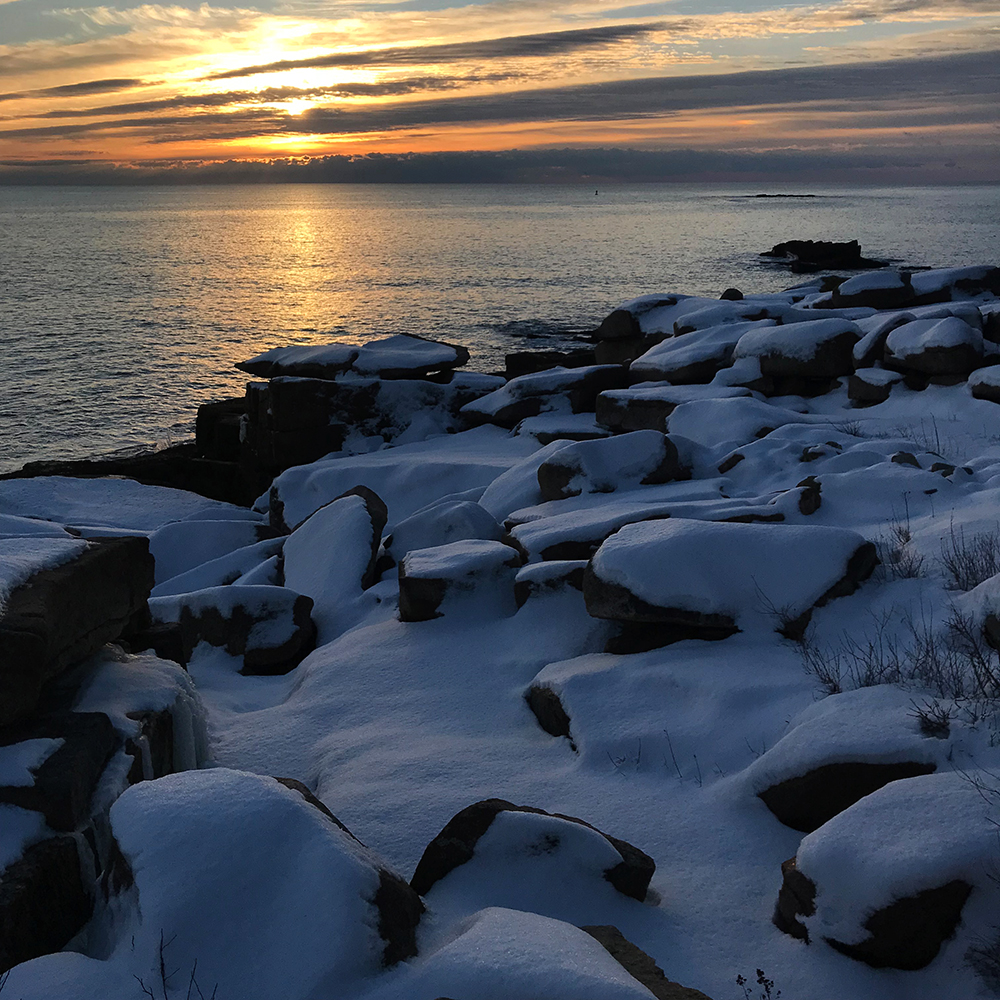
While the opportunities for winter activity are reduced compared to those available in warmer months, the combination of ice and snow contrasted against the granite cliffs and crashing seas is no less than stunning. Winter means less people too, which means an opportunity for endless hours of isolated exploration.
Although the park is relatively small at 47,000 acres, solitude can be attained in the upper regions of the park, especially during winter months, when reaching these areas requires substantial effort. I found that the trails were manageable with merely boots, but following a recent snowfall, snowshoes would likely be a requirement.
See the Visiting Acadia page here at Park Junkie to get a more complete run down on the seasons.
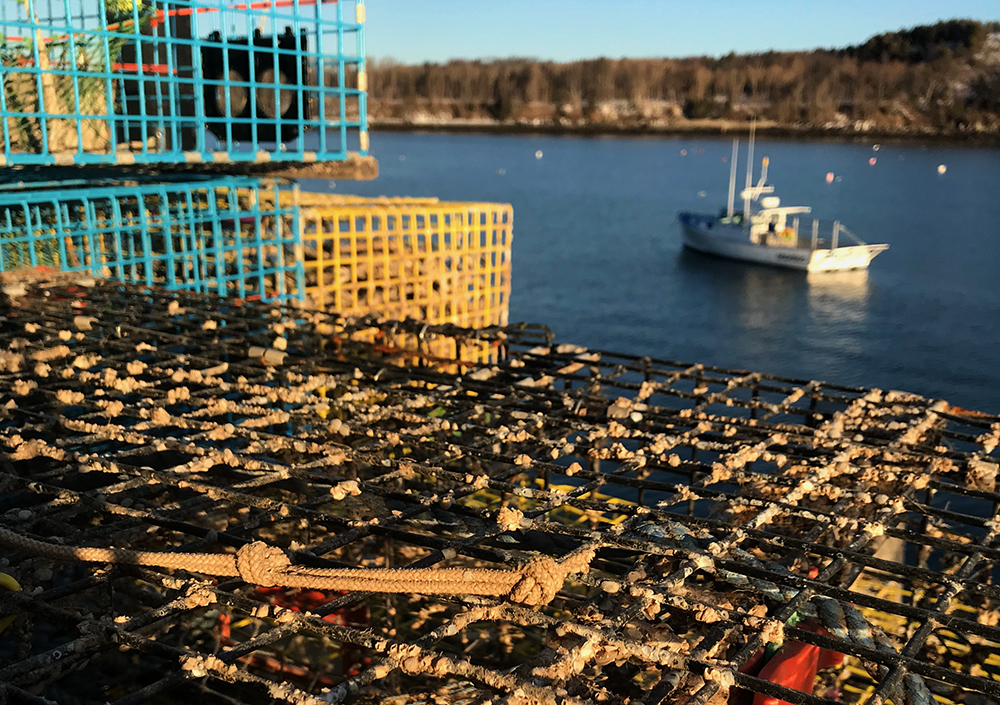
Park Junkie Verdict
Acadia is one of those parks that really requires effort to visit. There are no other national parks anywhere near it, so if you’re on a national park road trip, it’s gonna add some serious miles and probably at least a week of time to your journey.
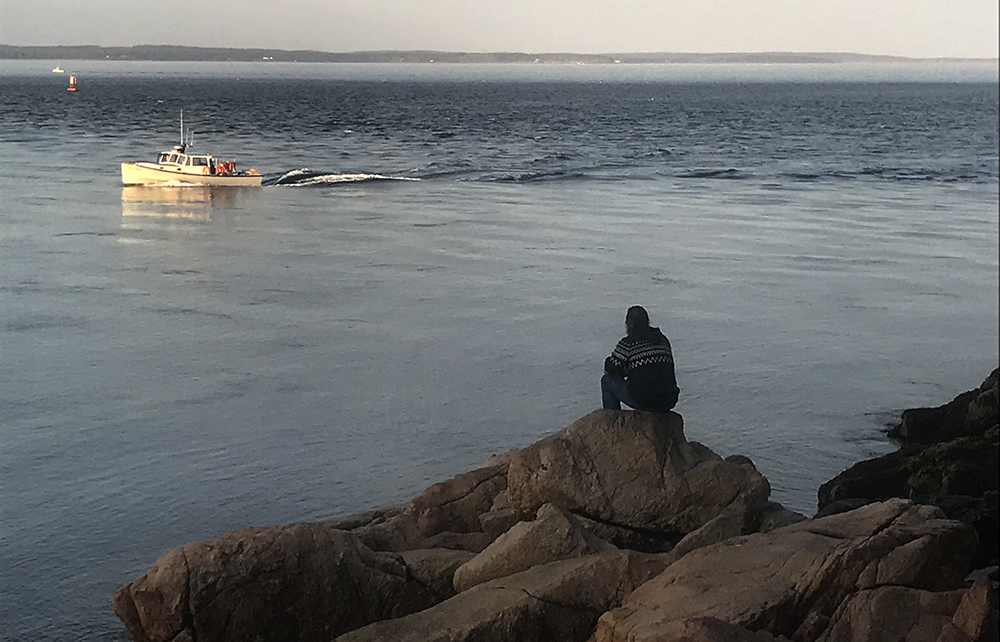
That said, it’s worth it. Do your research and make sure that you have your lodging and driving reservations set and just head on up there. You’ll probably find yourself pleasantly surprised.
There’s a lot to see in Acadia, and you’ll want some time, so just take it easy, have some lobster, and don’t try to rush it while you’re here.
The Downeast region of Maine was certainly not meant to be rushed…
See ya there…
Acadia Guide
Relevant Links
National Park Guides

All content found on Park Junkie is meant solely for entertainment purposes and is the copyrighted property of Park Junkie Productions. Unauthorized reproduction is prohibited without the express written consent of Park Junkie Productions.
YOU CAN DIE. Activities pursued within National Park boundaries hold inherent dangers. You are solely responsible for your safety in the outdoors. Park Junkie accepts no responsibility for actions that result in inconveniences, injury or death.
This site is not affiliated with the National Park Service, or any particular park.
